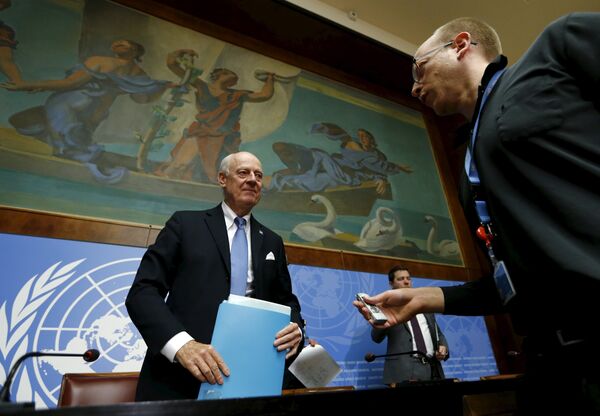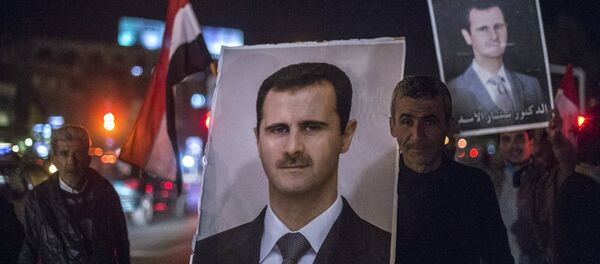Back in February 1982 Israeli journalist Oded Yinon published an article entitled "A Strategy for Israel in the Nineteen Eighties." The journalist argued that fragmentation of Arab states in the region would play directly into the hands of Israel.
"Syria will fall apart, in accordance with its ethnic and religious structure, into several states such as in present day Lebanon, so that there will be a Shiite Alawi state along its coast, a Sunni state in the Aleppo area, another Sunni state in Damascus hostile to its northern neighbor, and the Druzes who will set up a state, maybe even in our Golan, and certainly in the Hauran and in northern Jordan… This state of affairs will be the guarantee for peace and security in the area in the long run, and that aim is already within our reach today," Yinon envisaged.
She calls attention to the fact that then US Secretary of State Condoleezza Rice's "Project For a New Middle East" presented in Tel Aviv in 2006 echoed the Yinon vision.
"The plan outlined the way in which Middle Eastern countries could be balkanized along sectarian lines. This would result in the creation of several weak landlocked micro-states that would be in perpetual war with each other and never united enough to resist Israeli expansionism," Susli writes.
Interestingly enough, it was 2006 when US Ambassador to Syria William Roebuck sent a cable to the White House describing how to exploit Syria's "vulnerabilities" in order to drive a wedge between Sunnis and Shiites in Syria and then to topple Bashar al-Assad.
"The fall of the House of Assad could well ignite a sectarian war between the Shiites and the majority Sunnis of the region drawing in Iran, which, in the view of Israeli commanders would not be a bad thing for Israel and its Western allies."
Remarkably, five months later, apparently in December 2012, Clinton wrote: "The best way to help Israel deal with Iran's growing nuclear capability is to help the people of Syria overthrow the regime of Bashar Assad."
Clinton purportedly knew that by ousting the legitimate president of Syria she would pave the way for the country's dissolution.
Susli notes that Washington is seemingly determined to achieve its goal by hook or by crook: Kerry's Plan B came right before UN's special envoy Staffan de Mistura proposed to discuss Syria's federalism at the Geneva talks.

In response, the Syrian Government and the Syrian National Coalition rejected the federalization plan, and with reason.
"Syria is a very small state with limited resources. Unlike the US and Russia, Syria is located in the Middle East which means water is limited. In spite of the fact Syria is in the so-called fertile crescent, Syria has suffered massive droughts since Turkey dammed the rivers flowing into Syria and Iraq. Syria's water resources must be rationed amongst its 23 million people," Susli explains.
"It could be said that the Yinon plan had some success with the Kurdish PYD declaration of federalization. The region of Al Hasakah [Hasaka] where a substantial portion of Syria's oil and agriculture lies, has a population of only 1.5 million people, 6% of Syria's total population. Of that, 1.5 million, only 40% are Kurdish, many of which do not carry Syrian passports. PYD's demand that the oil and water resources of 23 million people be given to a tiny part of its population is unlikely to garner much support amongst the bulk of Syria's population," Susli stresses.
"Ironically promoters of the Yinon plan try and paint federalism as a road to peace. However, Iraq which was pushed into federalism in 2005 by the US occupation is far from peaceful now," she underscores.



